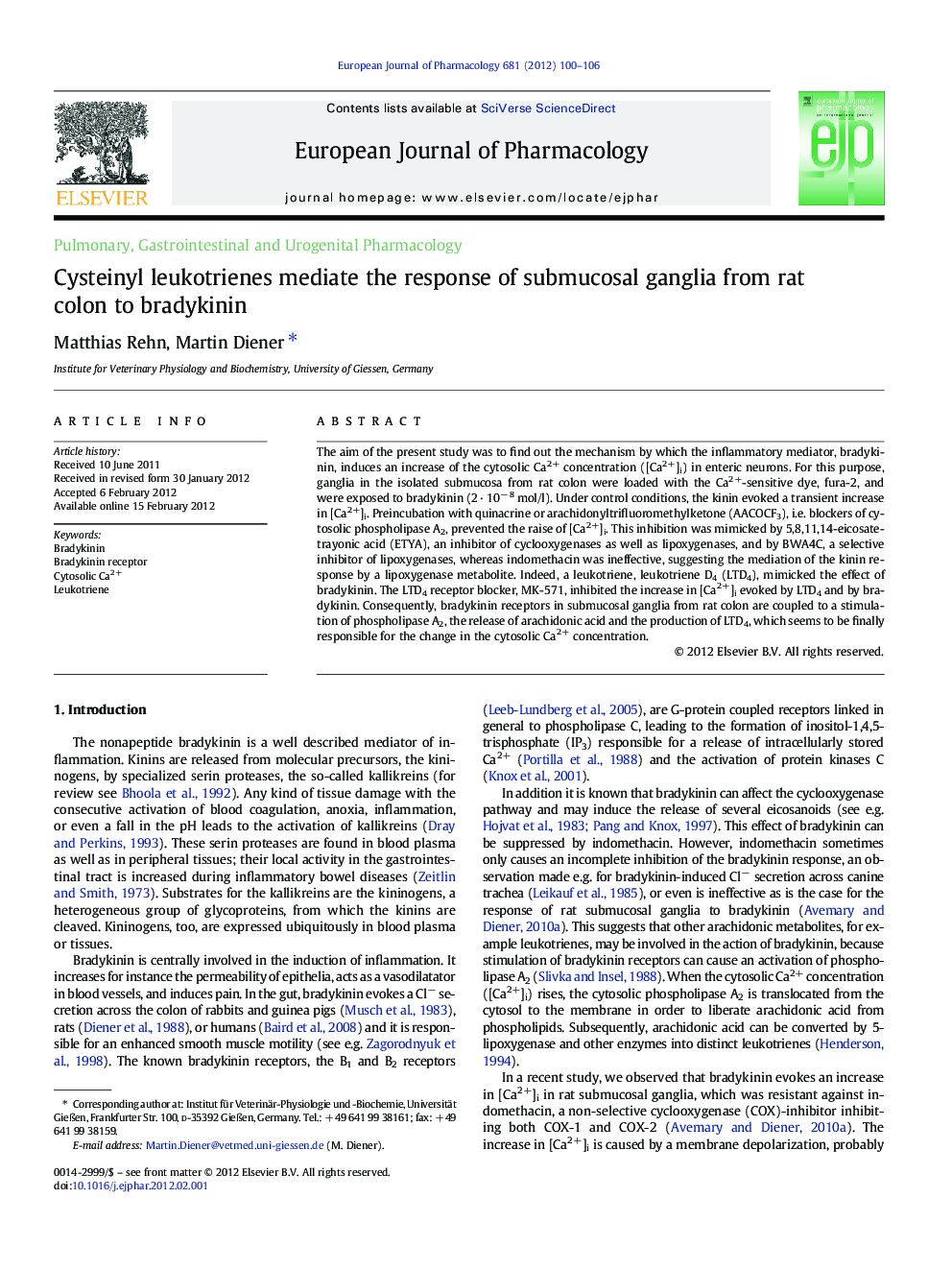| Article ID | Journal | Published Year | Pages | File Type |
|---|---|---|---|---|
| 2532375 | European Journal of Pharmacology | 2012 | 7 Pages |
The aim of the present study was to find out the mechanism by which the inflammatory mediator, bradykinin, induces an increase of the cytosolic Ca2+ concentration ([Ca2+]i) in enteric neurons. For this purpose, ganglia in the isolated submucosa from rat colon were loaded with the Ca2+-sensitive dye, fura-2, and were exposed to bradykinin (2 · 10− 8 mol/l). Under control conditions, the kinin evoked a transient increase in [Ca2+]i. Preincubation with quinacrine or arachidonyltrifluoromethylketone (AACOCF3), i.e. blockers of cytosolic phospholipase A2, prevented the raise of [Ca2+]i. This inhibition was mimicked by 5,8,11,14-eicosatetrayonic acid (ETYA), an inhibitor of cyclooxygenases as well as lipoxygenases, and by BWA4C, a selective inhibitor of lipoxygenases, whereas indomethacin was ineffective, suggesting the mediation of the kinin response by a lipoxygenase metabolite. Indeed, a leukotriene, leukotriene D4 (LTD4), mimicked the effect of bradykinin. The LTD4 receptor blocker, MK-571, inhibited the increase in [Ca2+]i evoked by LTD4 and by bradykinin. Consequently, bradykinin receptors in submucosal ganglia from rat colon are coupled to a stimulation of phospholipase A2, the release of arachidonic acid and the production of LTD4, which seems to be finally responsible for the change in the cytosolic Ca2+ concentration.
